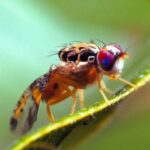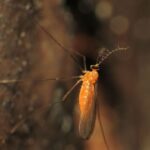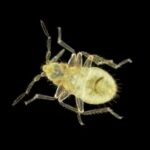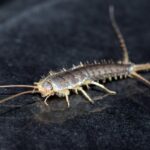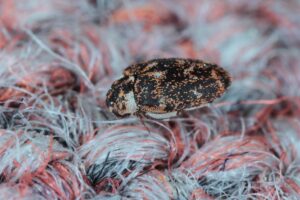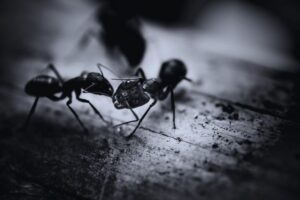One of the worst things a homeowner can experience is tiny little worms crawling around the house. And it’s even worse if you don’t know what kind of worms they are! How do you get rid of them? What do they eat? Are they dangerous or just gross? It can be hard to sort through all this information and figure out what to do.
Small tiny worms in the house can be larvae, millipedes, centipedes, bloodworms, or drain flies. They tend to lay their eggs in moist and hidden protected spots. The larvae are frequently seen moving around indoors after hatching until they fully mature into their adult form.
Read on to know what these small tiny worms are, where they usually hide, and what you need to get rid of them.
How to Identify Small Worms in Your House

Although there are many different types of small worms that can infest your home, they all have a few things in common:
- Usually no bigger than a grain of rice;
- Often brown, black, or white but can also be red or other colors;
- Move around by crawling or wriggling quickly from one place to another; and
- Rarely dangerous to humans and doesn’t bite, but it can be a major nuisance.
Small Tiny White Worms in the House
Small tiny worms in the house could look like tiny white maggots or rice, and they might be crawling around on the floor or hiding in the corner of your kitchen. These small worms are very common in houses and can be found almost anywhere, including the following:
- Carpets,
- Furniture,
- Clothing, and
- Food.
1. Larvae of House Flies or Blow Flies
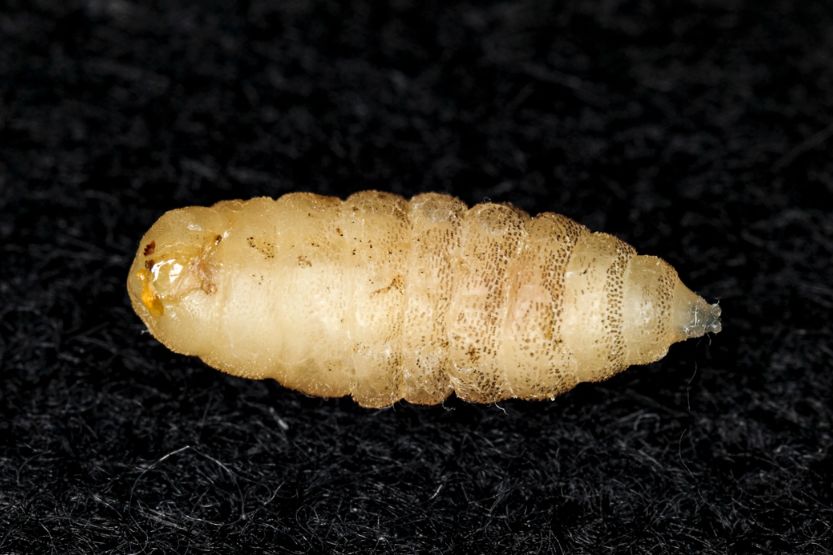
If you find small white worms in your home, they are most likely the larvae of house flies or blow flies. The flies first lay eggs, which hatch in 7 to 20 hours.
Larvae develop from these eggs, and maggots will appear as the larvae hatch. The maggots will eat anything accessible in their environment, including filthy and rotting items.
2. Maggots

Maggots are the larval stage of flies or baby flies. Their bodies are conical and usually creamy white, or gray.
It’s difficult to tell which fly species are present by looking at the maggots. The typical maggots you’ll see in your home, on the other hand, are bluebottle or common housefly species.
Small White Worms in House – What Are They and How to Get Rid of Them
How to Get Rid of Small Tiny White Worms
1. Identify the Exact Location
The first step in getting rid of tiny white worms in the house is figuring out where they’re hiding. They usually concentrate in areas where there are decaying food crumbs or decomposing organic materials.
Maggots are attracted to your trash can and deteriorating parts of your house’s foundation. If your foundation is in this condition, you must search different rooms on your ground floor. Locate all affected areas to get rid of the maggots in your house.
2. Destroy the Eggs and Maggots
Killing the maggots and destroying the eggs is the next step by pouring boiling water on them. Another method is to sprinkle salt on them. You can also use an insecticide to kill maggots and eggs. Spray the insecticide on them.
3. Spot Spray Using Insecticide
Spot spraying can be used if the infestation is only minor. However, if a large area is contaminated, you’ll need to spray the entire area with insecticide to eliminate the maggots and eggs.
4. Thoroughly Clean Infested Areas
The final step is to clean the contaminated areas thoroughly. After removing all maggots and eggs, rinse and wash the affected areas thoroughly.
It’s the only way of keeping these places from becoming infested again. Spray a good amount of fly repellent on these spots to discourage flies from returning.
Small Tiny Brown Worms in the House
Millipedes or Thousand Leggers

2.5 to 4 cm Long
Millipedes, commonly known as “thousand leggers,” are a type of arthropod that frequently enters homes. They are brownish, long, and slender and resemble worms with legs. Millipedes range in length from 2.5 to 4 cm. They are divided into segments, each with two pairs of legs.
Nocturnal Arthropod
Millipedes are also nocturnal and migrate in big groups at night. They’re also scavengers who eat rotting plant matter in and around your house. While they have a scary appearance, they do not bite or harm your property or food supplies.
Where Do They Thrive?
You can find millipedes in your yard and moist areas like:
- Flowerbeds,
- Mulch,
- Compost,
- Under leaves, stones, and rotting wood.
They’re also frequently spotted near foundations.
Drought, excessive rain, and cooler temperatures can make their outside habitats unsuitable, so millipedes are frequently seen indoors.
Once inside your home, you find them in the following places:
- Basements,
- Laundry rooms, and
- Crawlspaces.
However, due to the lack of moisture, millipedes often die soon once they get inside.
How to Get Rid of Millipedes
1. Stay Put and Wait Them Out
Millipedes that find their way inside your home tend to stay because they don’t know how to get out. So if you discover millipedes in your home, you might want to wait them out.
Millipedes only live for a few days in the dry environment of most homes, so an infestation is likely to be brief. You can also sweep them up using a broom or vacuum cleaner or pick them up by hand.
2. Make a Bug Barrier
Another approach is to use an indoor and perimeter insect killer to spray them. This will create a barrier against future millipedes and other bugs. Spray the following areas:
- Along the bottom of exterior doors;
- Crawl space entrances;
- Utility openings and vents in the foundation wall; this is where the siding meets the foundation block;
- Along the interior walls of basements and crawl spaces; and
- Along the outside perimeter of your home.
Again, what are the common small tiny worms in the house? Most often, the small tiny worm you see in your house includes houseflies or Indian meal moths’ larvae. These pests lay their eggs in baseboards and other hidden areas. Then, when the larvae hatch, you’ll see the pupate crawl.
Small Tiny Red Worms in the House
1. Centipedes
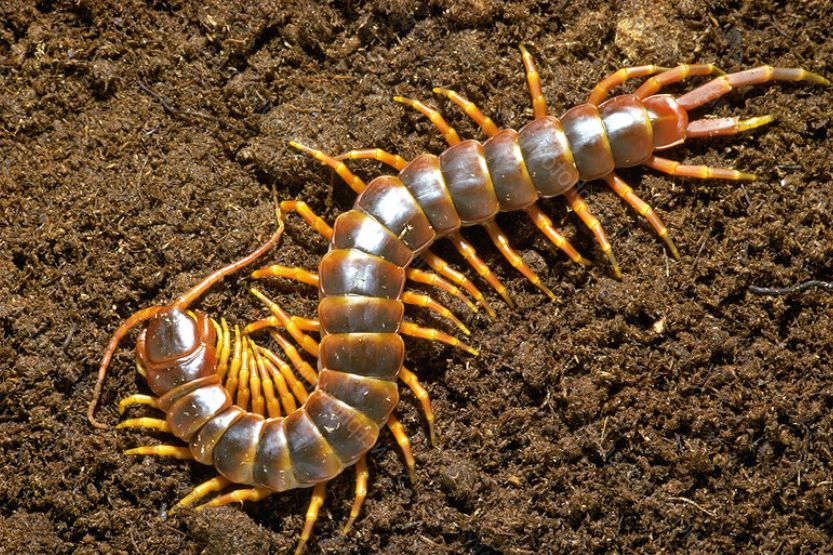
Worm-like and Have Brown or Red-colored Bodies
You most certainly have a centipede problem if you’ve discovered what appear to be small red worms in your home. Centipedes have that little worm-like look and brown or red-colored bodies, making them easily mistaken for worms.
Utilized for Composting
On the other hand, red worms are not tiny, averaging 5 inches long. They don’t live in houses and are primarily utilized for composting. The most common centipedes at home are only a few millimeters long, but the rarer, larger ones can reach a length of up to 1.2 inches.
Where Do They Thrive?
You can usually find centipedes in moist environments, basements, and other areas with low light. They thrive in the cool temperatures of basements and the heat of attics but can also be found even in beddings and the walls of houses where there is excessive moisture from leaks or plumbing issues.
How to Get Rid of Centipedes
1. Call a Professional Pest Exterminator
Contacting a professional pest service is the easiest and most efficient approach to getting rid of centipedes in your home. They can find the source of the centipede infestation and eliminate it.
2. Use a Dehumidifier
Use a dehumidifier and place it in your home’s dark, damp areas. For the centipedes, this will make the habitat excessively dry.
3. Set a Bug Trap
Put a bug trap in the center of a moist piece of cardboard and place the cardboard where you can see the centipedes. The centipedes will attract the cardboard’s moisture, killing them in the trap.
4. Vacuum and Use a Bed Bug Powder
You may have bed bugs if you notice centipedes in your bed. Vacuum or replace your mattress after changing all linens on the bed. It’s also a good idea to get some bed bug powder.
2. Bloodworms

Bloodworms are typical household pests that can be found near any home water source, such as bathtubs, sinks, and toilets. They get their name from the bright red color of their bodies, which is caused by hemoglobin. Bloodworms are thin and can reach a length of a few inches.
How to Get Rid of Bloodworms
An infrequently used toilet is ideal for bloodworms since they thrive in stagnant water. Because bloodworms feed on organic matter in your toilet, the best approach to get rid of the worms is to remove them from the bowl and clean the toilet thoroughly.
They will no longer consider your toilet bowl a suitable environment once they have run out of organic matter to eat.
Small Tiny Black Worms in the House
Drain Flies

Can Spread Harmful Bacteria
Small tiny black worms are drain flies, which you can find in areas with high moisture. These critters, sometimes known as filter, sink, or sewer worms, can spread harmful bacteria and should be removed from your home.
The larvae are usually found at or near the drain mouth. If the flies can get into the cabinet, they will lay their eggs there if there is enough moisture.
The larval stage lasts 9 to 18 days, so if you do nothing, the worms will vanish, but you’ll be overrun with drain flies in no time.
How to Get Rid of Tiny Black Worms at Home
1. Get Rid of Dampness
The approach for controlling black worms on the bathroom floor or under the kitchen sink is obvious if they are looking for moisture. Getting rid of the dampness is a must.
2. Install and Use an Exhaust Fan in the Bathroom
In the bathroom, the exhaust fan may require more frequent use. You may need to open the door and let air circulate using a fan for many days if they’re under the sink.
Millipedes and drain fly larvae cannot survive without moisture for lengthy periods. So other than drying up the areas where they are found, no other control strategies are needed.
You don’t have to spray them with pesticides. You probably don’t need the additional unpleasant fumes in your home anyway.
3. Don’t Use the Shower for 1-2 Weeks
If you discover little black worms in your shower drain, you can kill them by not using the shower for 1 to 2 weeks.
4. Pour an Enzyme Drain Cleaner Down the Drain
But if that doesn’t work, pouring an enzyme drain cleaner down the drain is the recommended treatment. The enzymes consume the organic materials in the drain, making it less appealing to flies.
Frequently Asked Questions – House with Small Tiny Worms
What Causes Little Worms in My House?
The presence of an animal carcass, carelessly stored trash, or excess dog feces are the primary causes of maggots in or near your home. These materials attract female flies, who lay their eggs on them.
Why Do Small Tiny Worms Appear in My House?
Worms like moisture. Bathrooms and basements are ideal environments since they thrive in warm, damp conditions. If your home is damp enough to attract them even on non-rainy days, you should consider investing in a dehumidifier, particularly for the dampest areas.
What Are the Little Brown Worms in My Carpet?
Adult carpet beetles are tiny and speckled or mottled in appearance. They lay small eggs that develop into fabric-eating larvae in weeks. Larvae are around 1/8 to 1/4 inches long. They are tan to brownish in color, slow-moving, and densely covered with bristles or hairs.
Why Are There Small Tiny Worms in My Bed?
Fabric is a favorite food of moth larvae, especially old clothes that have been stored for a long time. But that doesn’t rule out the possibility of them appearing on your bed sheets.
Clothes moths include various common moths. These tiny bed worms are attracted to the same conditions that attract bed bugs.
How Do I Get Rid of Tiny Worms in My House?
Regular household cleaners such as bleach and borax work well. Vacuuming and steam cleaning can also kill bugs and worms and remove their eggs. Keep your drains and drain guards clean, especially in the kitchen.
What Are Bugs That Look Like Small Tiny Worms?
Millipedes have worm-like bodies divided into numerous segments, each with two pairs of legs, usually 1 to 2 inches long. Even though their name means “a thousand legs,” this arthropod does not have that many (80-400 is typical.)
What Tiny Worms Look Like Maggots?
These “worms” are likely Indianmeal moth (Plodia interpunctella) larvae if they are only in your kitchen and are creeping up walls and ceilings. Fly maggots are the other small white worms in that size range that can be seen in kitchens. However, they don’t have legs.
Conclusion – How to Identify and Eliminate Small Tiny Worms in the House
We hope we’ve answered some of your questions about these mystery worms and that you’re feeling a little more confident in your ability to keep them out of your house.
They may look harmless enough, but once they start getting into your house and making their way onto the floors and countertops, it’s a severe problem that needs to be dealt with as soon as possible. If they do come back or keep reappearing, it’s best to let the professionals handle it.


